|
The first step to closing the achievement gap is believing it is possible. There are monumental challenges facing education these days but if we do not have the courage to take the first step in believing things can change -transformation will never be possible. All students have the potential to grow. Universal Design for Learning is a framework for removing specific barriers that keep our learners from thriving in the areas of engagement, content representation, and action & expression. This framework is built on importance of this belief in all students.
Next in our quest to close the achievement gap is setting and maintaining high expectations. Learners need to be confronted with instruction that aligns clearly with the rigor of the standards or learning targets. When learners are presented with these rigorous expectations in conjunction with a teacher that believes in them and gives them the tools they need to be successful - they will grow. As we continue down the road to ensure a guaranteed and viable curriculum, stay tethered to the clear non-negotiables and correct depth-of-knowledge level of each standard. This way lessons and assessments stay grounded in these important foundations. Remember these expectations represent core instruction and ALL students need equal access to this rigor. The last step to closing the achievement gap is giving learners flexible tools and strategies for meeting these rigorous expectations. This is where Universal Design for Learning comes in. Once we have the required skills for mastery and we have our learning goal or target, we have the needed information for which lesson elements are fixed and which can be flexible. How students engage with the standard, how the standard is represented, and how they show their understanding of the standard (in ways that meet our non-negotiables) can all be flexibly designed to accommodate our students' incredible diversity! As we move into our spring PD schedule, keep these important steps in mind. Reflect on how we as a Professional Learning Community can continue to walk together toward this end for the flourishing of our incredible students and community!
1 Comment
The basic summary of her research is that the area of our brain that literally (and I do mean literally) keeps our heart beating, our lungs breathing, and systems necessary for life functioning is the very same area of the brain where we experience our emotions; our midbrain, which is the area known as our affective network (Immordino-Yang, 2011). What this means is that when we or our students experience extraordinary moments the reason those moments stay with us so long is they are actually happening in the same areas of our brain that are sustaining life.. So how does this relate to teaching you ask? Well this means when we facilitate extraordinary moments inside and outside the design of our instruction for our students, we are actually changing the way that their brain functions. Dr. Immordino-Yang has studied what happens to the brain when it experiences moments of inspiration or awe and what she has found is that bloodflow actually increases to the very places that keep us alive. That is what makes that moment so very memorable. The implications for this is that engagement really really matters from a brain stand point, something that any teacher of course knows, but biologically science has now proven it to be so. So when we create an emotional hook that draws students into our lessons, when we give the right encouragement at the right moment in terms of specific feedback, when we pat a student on the back and reinforce their value to us; it specifically and powerfully changes both the way they think and has the potential to create an impression that they will literally never forget. The implications for this are endless and gives all of us an awesome opportunity to make a difference everyday! Need ideas? The checkpoints below are designed to specifically impact this area of students' brains. #susdmoments Think and Be Happy. “Dr Mary Helen Immordino-Yang 'We Feel, Therefore We Learn' at Mind & Its Potential 2011.” YouTube, YouTube, 16 Apr. 2012, www.youtube.com/watch?v=85BZRVE6M0o&index=19&list=PLiEEVaszwWmAS1aa1qYhYfrRYOGGDyX01&t=0s.  "UDL is great but how does it support students during test taking settings?" This is a very common and understandable question that people find themselves asking as they discover Universal Design for Learning. So with testing season upon us! Let's dive into a conversation about ways we can incorporate the checkpoints around engagement and action & expression in our quest to support students' during test time! Multiple Means of Engagement We have to get our learners engaged with tests! Easier said then done we know, but students having opportunities to feel safe, strategize, and use tools is imperative for them to have the skills they need for success. Remember during the testing phase of instruction we often are placing students in the most restrictive settings monitor progress and so we want to equip them with the internal reflective strategies to be successful. Here are some checkpoints and strategies to consider: Provide Options for Self-regulation
Multiple Means of Action & Expression  Ultimately a well designed summative test should be one of many ways a students' executive brain networks are being challenged. During tests though, it is incredibly important to provide students with strategies they can do internally to support themselves. Below we are going to look at the checkpoints that we can reinforce before and after a test to support students incorporating high quality thinking. Provide Options for Executive Functions
In closing, the goal of for Universal Design for Learning is creating expert learners. We need our students to be able to thrive in what ever environment they find themselves in, whether out on a job site, in a classroom, creating a project, or taking a formal test. Students become experts when they know how to use the knowledge and tools and resources at their disposal to show their understanding and get tasks done!
Here is a link to a google doc! Let us know if you have other ideas to add! Check out our last Story from the Field! An awesome video from Lincoln 5th grade! When I asked if they'd be interested in sharing their UDL experiences with our district their response was, "absolutely as long as we can make a video." So in true Universally Designed fashion here is Lincoln's take on the impacts of Universal Design for Learning from the student perspective! Enjoy... Our second to the last story comes from Quail Lake Charter School. 7th Grade teacher, Rachel Groft shares her experiences with how choices and saying "YES!" leads to deeper conceptual knowledge and student innovation. Super inspiring and a great example of easy ways to embed UDL into lessons and experiences. Thanks Rachel! Enjoy everyone! Learning to Say "Yes!"By Rachel Groft, 7th Grade ELA & SS Teacher 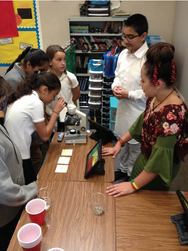 Back when my oldest son was little, I remember hunting around for preschools, looking for the perfect school to foster his creativity and grow his little mind. In one class, I saw some simply adorable art projects hanging on the wall. You know the kind… the teacher provides a template, gives each student a few pre-cut shapes, maybe some popsicle sticks, and some paint, and has each student re-create the adorableness. Whola! A bunch of fun. And then there was an entirely different classroom. No piece of artwork looked the same. I remember watching as the little one with chubby cheeks and long ringlets asked her teacher for a piece of celery, wanting a snack perhaps? The teacher hunted through her fridge but could not find any celery. “I’m sorry, but would a carrot or piece of broccoli work?” The little one thought for a moment, and grinned. Off she went with such joy and eagerness... to paint her snowman. The broccoli made for a perfect paint brush when texturing snow, and the carrot, well, it did a fantastic job of painting curly hair on her one-of-a-kind snowman! When was the last time you said “Yes!” to a student asking to do something a “different” way? An out-of-the-box way? A way you have never seen done before? A way that might, if you’re being honest, make you a little uncomfortable, take a little more time, or involve a supply you don’t have? My encouragement to you today is to push yourself toward “Yes!” If saying yes still allows a student to meet the assignment goal, go for it! It promotes an excitement and love of learning like no other word can. With most of my major class assignments, my rubrics offer two, three, or maybe four options for assignment completion... but they always offer, “If you have a different great idea, ask me. I bet I’ll say yes!” At the start of the school year, and especially with students who do not like taking risks, most of my students will utilize a tool or resource that I suggest or that is specified on a rubric… a specific website, a certain app, a previously used graphic organizer. But as the year goes on, and I encourage, encourage, encourage students to come up with their own creative ideas, a couple students will slowly start to emerge from their turtle shells and ask to do extremely innovative and exciting things! And WOW how learning can explode! Other students inquisitively watch, and bravely begin to innovate and try their own ideas. A mock interview could turn into an actual interview with an immigrant from Egypt or a resident of Ethiopia. A three-flap foldable could turn into an interactive game on an app. A paper design for a water filtration system could turn into a 3D-printed filter. An individual project on a famous historical figure could turn into a group project on a set of historical figures and how their overlapping contributions affect our culture today. A 3-dimensional map could be created using anything from cotton swabs to legos to rotating trading ships built from clay and cardboard. The sky is the limit! Try saying “Yes!” in your classroom, as uncomfortable as it may be. Keep trying, even if it doesn’t go well, and you will certainly see some amazing things! Hell0! This week we are excited to showcase the efforts of a third grade teacher and his team out in Sequoia Elementary. Tyler Yost, one of our amazing new teachers, writes about his initial experiences incorporating Universal Design for Learning as a design lens for his instruction. He dove in head first with us last year during connecting in with our 3rd grade pilot team mid year. Hope you enjoy his story! Only 2 more stories left! I had the great opportunity of joining a third grade team at Sequoia Elementary who were just starting their journey of Universal Design for Learning. As a brand new and young teacher, there are many challenges you face without having classroom experience. For most new teachers, like myself, the challenge is always classroom management. How do I have all of these different minds, personalities, needs, and more from each of my students, and make it all work? That is why I feel so fortunate to have landed in such a great position of a UDL pilot team. New teachers are just trying to figure out how this “teaching” thing works. UDL gave me direction and the opportunity to take risks in my classroom. Originally, I thought UDL is never going to work. If I give up control, have a flexible moving classroom, give kids options, there is going to be CHAOS. Which at times, there was. “Organized” chaos as I would like to call it. "Originally, I thought UDL is never going to work. If I give up control, have a flexible moving classroom, give kids options, there is going to be CHAOS." What I started to find through lots of trial and error however, is that empowering students and creating a culture that shows you have a voice, options, and have something to offer, can lead to some really great things. I started used the UDL guidelines more of an assessment of how I am running my classroom. Especially focusing on how are my students engaged? Starting from the beginning, looking at specifically 7.2, and 7.3. In a nutshell why does what they are learning matter to my students? Is it relevant? Also, is my classroom safe and set up in a way they are focused and not distracted? "What I started to find through lots of trial and error however, is that empowering students and creating a culture that shows you have a voice, options, and have something to offer, can lead to some really great things." 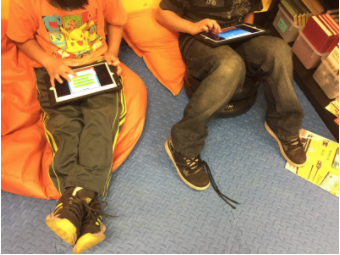 It was the little things that ended up making the biggest differences. Being intentional about how my classroom is set up, the supplies and supports they have, and how they interact and move within the classroom. As I have moved into my second year with more experience of UDL, I have seen my classroom management improve, student learning improve, and seen how much a universally designed classroom can change things for students. Happy New Year Everyone! As we share our last few stories from the field, we want to bring your attention to Del Rey Elementary! Gloria Robles and Debbie Neal, two incredible 2nd grade teachers wanted to share how Universal Design for Learning as impacted their instruction. From last year participating in pilots to this year being leaders for UDL on their campus, they are a wealth of knowledge and experience in all things related to the instruction and care for students in the community of Del Rey. Super excited to share their insights! Take a look! We are so excited that we made the decision to pilot UDL. This is our 2nd year but we can say that the first year was a little overwhelming but a wonderful learning experience as we got familiar with UDL and the UDL guidelines. We focused on Engagement, and with the help of Zach, we were able to create a Compare and Contrast lesson. The lesson began with a short Disney movie clip that got the student’s attention. They were very engaged in collaborating with each other on what was the same and different between the two characters. We also used images such as SpongeBob and the Minions for the students to orally practice using the color-coded vocabulary words and sentence frames for them to compare and contrast the two images. At the end, the students had options to share their compare and contrast sentence by writing it, using Chatterpix to record their sentence, or telling the teacher. One realization I discovered through this lesson is that students who could not write a thorough response did understand the concept as measured by their verbal response. They were able to say the sentence with great detail and understanding of the concept. So that showed me that the writing was a barrier for them but with the option to orally share their answer it showed me they could do it and they met the goal! We also worked on the Environmental Problem of Practice, which took place during transition time at the end of the day. What used to be controlled chaos at the end of the day became a smooth flowing learning experience with little teacher direction. We created a powerpoint and check off list with step by step directions and images of what it should look like as they prepared to go home. Before being dismissed, students had to self-reflect on how they did by using a 1-4 scale. Students would share what went well and what they could get better at for the next day. Zach suggested adding a song to signal when it was time to clean up and go home. We were a little skeptical but we tried it and it worked!! Eventually this evolved from it being teacher led to student led. When they heard the music, they knew it was time to transition home and used the checklist as a guide. It was great to see that with a push of a button we were ready to go home in record time. Now in our 2nd year, it’s getting easier to implement UDL and we are seeing things differently. Our UDL lens allows us to prepare a lesson and focus on key UDL questions during lesson design and development. Engagement and representation strategies have been a focus for our lessons while providing options for our students to be able to show their understanding in different ways and using different tools. We have seen such positive results with implementing UDL and knocking down the barriers students may face so they can be successful. Sample Music to listen to as you enjoy an amazing blog post!Our next story comes from Elizabeth Dobrinen and her team at Madison Elementary School. Elizabeth is a RSP teacher working with students across multiple grade levels. Madison's 4th grade PLC and Elizabeth were in our UDL pilots for the 2016-2017 school year doing some incredible work in the area of professional teaming and support of students of diverse sets of needs. Here is her story!  The use of the UDL instructional planning process allows our UDL team to regularly establish clear outcomes, anticipate learner needs and measure their success. UDL also promotes collaboration among staff, student self-sufficiency and student advocacy amongst both general and special education students. Investigating the learner’s preferences for representation, expression and engagement allows our team to work together to discover the strengths of each student in the area of learning and assessment. For example: the 4th grade standard of area multiplication can be daunting for any student. As a team we created two model options for students to help guide them through the steps. Students were given a choice of what model worked for their learning style. Options were also given for their learning environment. Based on data and/or IEP goals, students from all three classes were directed to a small group setting in the back of the classroom. With the RSP teacher, students strengthened their understanding of the standard with their choice of the math model. Additionally, any student can ask to request learning in a small group setting or large group for guided support. Students regularly take teachers up on this option. To ensure generalization of the standard taught, students regularly are asked to “teach” their peers to support their learning and the learning of their peers. Data showed that with options with assessment styles (one to one setting, test read to student, white board, multiplication tables) students increased their scores by 70%. Our 4th grade pilot program has now extended to collaboration with 5th grade and students are demonstrating success. As a staff that collaborates regularly together we are having a better understanding of UDL and how to ensure success for all students. Elizabeth Dobrinen (RSP) & the UDL team Madison Elementary School Our next story from the field comes from Jessica Mireles, 5th grade teacher from Sanger Academy Charter. Her and Delilah Isaak, her PLC partner, are some of amongst most innovative UDL practitioners. Here she is addressing the instructional design evolution she experienced in her application of Universal Design for Learning with her students.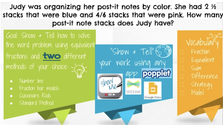 I have always believed in teaching through a universal design lens, where all students needs could be met regardless of their background and skills. UDL has provided the framework for allowing more students to succeed in the classroom and take ownership of their learning. Through this journey in UDL, I have found that there were two major components of implementation: environmental and providing both engaging and meaningful lessons/activities. In my classroom, we learn through many hands on and relevant activities to understand a concept. We build, discuss, analyze through real life situations, tasks, and projects. Time after time, I hear students say “even though we have to do the math, it’s really fun!” or “can we learn like this all the time?” I have found that students have been able to deepen their knowledge when they are fully engaged in a lesson or activity. Having a visual or something physical to supplement learning goes a long way. For example, students are able to understand multiplication using the area model in a physical space of tiles in the classroom or using base ten blocks or measuring and finding the area of objects and spaces around the classroom. Students also recently created a family dinner through shopping while adding, subtracting and multiplying decimals. The UDL model is extremely beneficial when teaching ELA standards the otherwise would not be appealing to students. Some activities, such as teaching opinion/argumentative writing through short debates, creating Colonial Commercials or learning new greek & latin roots through researching of new words and creating a portfolio on google slides, leave students requesting more of the same activities. As a teacher, these are the type of lessons and activities I strive for everyday. Although my classroom is extremely structured with rules and procedures, students have choice as to how and where they learn. Depending on the assignment and whether they are working individually or with their peers, students can work in designated areas of the classroom. We have a large round table suitable for group work, a student whiteboard on the back wall, a comfy library area, a plethora of stools for extra seating anywhere in the classroom, floor space, standing desks, work tables as well as the option to work outside the classroom door if appropriate. All of the choices must be earned and expectations must be followed, not all students have these privileges. My students have learned to earn different levels of “choice”. No matter what the classroom looks like, each students is accountable and responsible for their work. Overall, UDL has expanded my classroom and teaching style. Although it takes dedication and a creative mind to create these activities and tasks, the end product of what students receive gives more of an opportunity for student success. Students are motivated and learn more when we make teaching fun. Because these activities require immense classroom management, students become more responsible and “self-controlled” young learners. Our next story comes from Daniel Cuellar, former 8th grade math teacher at Washington Academic Middle School (WAMS) and current curriculum support provider at WAMS. He dove headfirst into applying the UDL guidelines to his teaching practices last year and has some wisdom he learned along the way. Check it out! UDL helped break down the biggest barrier that can ever exist in a math class, the barrier of anxiety. In my experience as a middle school math teacher, starting in Central Unified, and then moving here to Sanger Unified, I have never been shy to try something new, something better. Not for my sake, but for the sake of our students. After experimenting with the UDL framework, I quickly learned what was a good jumping off point for me as a teacher that is new to UDL. At first, I was frustrated at the lack of progress from my students. As teachers we are trained to make data informed decisions, and as my data did not drastically change, my hopes for UDL began to slip. Focusing on only the data was the biggest mistake I made when trying UDL. I was so focused on looking at scores and assessments, that I forgot to look at the most important component of my teaching, the students. The implementation of the engagement checkpoints from the UDL guidelines helped break down the barrier of anxiety for my students. From the UDL framework, I created a collaborative culture within my classroom by adding more whiteboards on the wall to allow for students to work together standing up."After teaching with the UDL framework, I would never go back to the old way of teaching." I created a safe place for my students by bringing out all my supplies to create a supply table where students can access any tool they feel they need at any time throughout the class period. I changed my tone of speaking with my students to make it clear that it is ok to make mistakes while we practice to get better. Because I was neck deep in looking at data and numbers, I missed the fact that all of my students had immersed themselves within the culture UDL helped me create. Students that did not try before, now were trying. Students that were afraid to be wrong, were brave to work to be right. Students felt they had a place to be safe, empowered, and valued for their insight. I had to trust that the data and progress will come, and it did. The progress started with my students with failing grades. For those students where a D was unimaginable they began actually to meeting or even exceeding that mark, all because they started engaging with the content. After teaching with the UDL framework, I would never go back to the old way of teaching. |
Sanger UnifiedArchives
January 2019
Categories
Podcast Archives
|
Pictures are Worth 1000 Words
|
Sanger unified school district |
Curriculum & Instruction department |


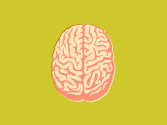
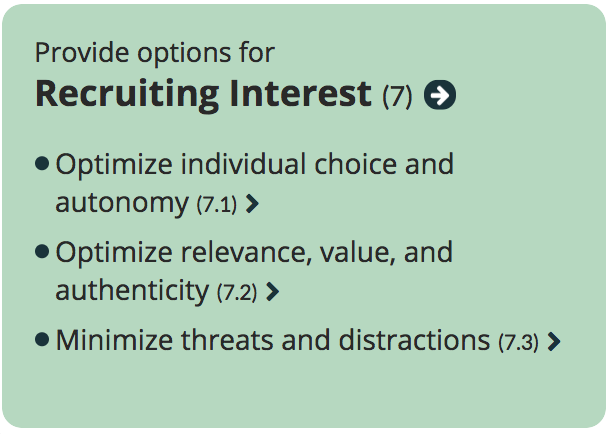
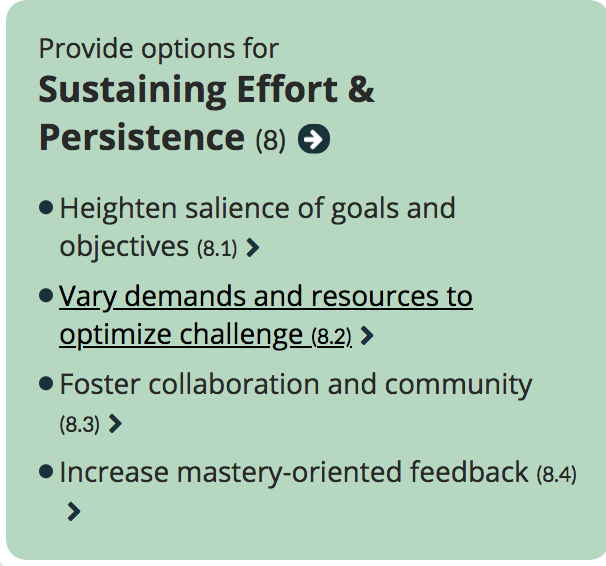
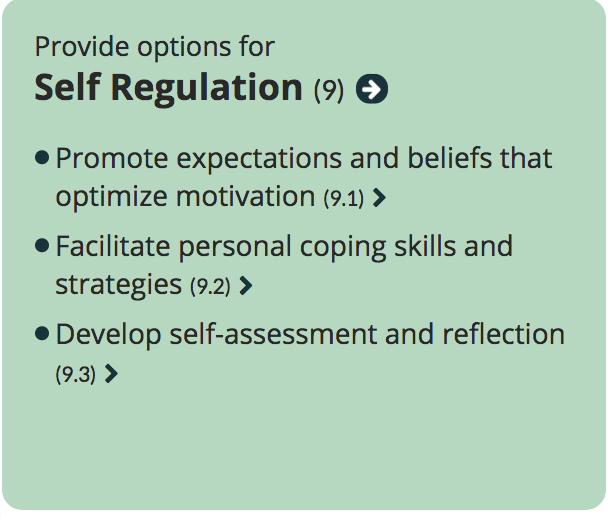

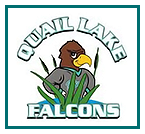







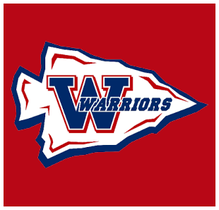


 RSS Feed
RSS Feed